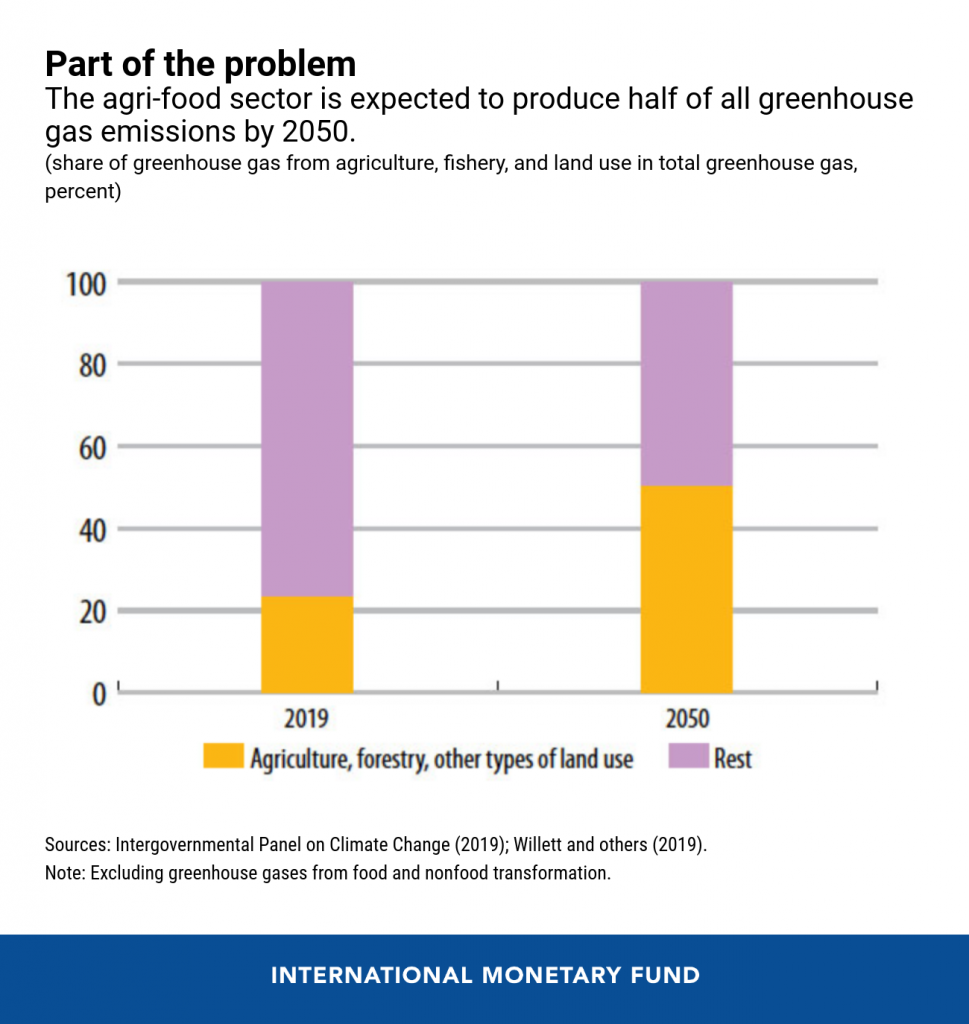2020 will be a year of reckoning for the world’s food systems.
2020 will be a year of reckoning for the world’s food systems. In just months, COVID-19 shut down half the globe. Images of panic buying, empty grocery shelves and miles-long queues at food banks have suddenly reminded us how important food systems are in our lives and how imbalanced they have become.
Pandemic-induced runs on food, however, do not merely reflect human behavior during emergencies. They are evidence that the global food supply chain—highly centralized and operating on a just-in-time supply basis—is prone to falter in the face of shocks. In many countries, for example, it became impossible to harvest or package food as workers were blocked at borders or fell sick. Elsewhere, stocks piled up and avalanches of food went to waste because restaurants and bars were closed. In developing countries, the United Nation’s Food and Agriculture Organization and the World Food Program expect that a “hunger pandemic” and a doubling of people starving may soon eclipse the coronavirus, unless action is taken.
Unhealthy state
Cracks in the global food system’s facade have long been apparent. According to the latest State of Food Security and Nutrition in the World, already in 2018 about 820 million people went to bed hungry and a third of all people lacked essential nutrients. At the same time, 600 million people were categorized as obese and 2 billion overweight, because of imbalanced diets, which were also associated with obesity, diabetes, cancer, and cardiovascular diseases that compromise immune health. Today, immuno-depressed and malnourished people worldwide are suffering disproportionally the lethal consequences of COVID-19. In all these cases, the human toll comes with huge economic costs, including lost incomes and soaring public debt.
The limitations of the food system go beyond failing to feed the world well. Food produced through the overuse of chemicals, in monoculture cropping systems, and intensive animal farming on land and at sea degrades natural resources faster than they can reproduce and causes a quarter of all man-made greenhouse gas emissions, with livestock responsible for about a half of that. According to scientific research, including by the Food and Agriculture Organization, industrial animal farming operations that rear large numbers of animals in confined spaces breed lethal viruses, like the 2009 swine flu, and spread antibiotic-resistant “superbugs” because of the overuse of antibiotics to promote their growth and prevent infections.

At the same time, our uncontrolled disturbance of pristine habitats to farm and hunt has allowed deadly pathogens like SARS, HIV, Ebola, to jump species, infecting ours.
Economic reset
The rebuilding of economies after the COVID-19 crisis offers a unique opportunity to transform the global food system and make it resilient to future shocks, ensuring environmentally sustainable and healthy nutrition for all. To make this happen, United Nations agencies like the Food and Agriculture Organization, the United Nations Environment Program, the Intergovernmental Panel on Climate Change, the International Fund for Agricultural Development, and the World Food Program, collectively, suggest four broad shifts in the food system:
• Resilient food supply chains. Efficient and effective food supply chains are essential to lowering the risks of food insecurity, malnutrition, food price fluctuations and can simultaneously create jobs. Rural transformation to empower small producers and retailers and mainstream them in the food systems economy can help build resilient food supply chains.
• Healthy diets. Curbing the overconsumption of animal and highly-processed food in wealthier countries and improving access to good nutrition in poorer ones can improve well-being and land use efficiency, make healthy food more affordable globally, and slash carbon emissions. Retargeting agricultural subsidies toward healthy foods, taxing unhealthy foods, and aligning procurement practices, education programs and healthcare systems toward better diets can go a long way in achieving this. In turn, this can reduce healthcare costs globally, reduce inequality, and help us weather the next pandemic with healthier individuals.
• Regenerative farming. A shift toward sustainable and regenerative land and ocean farming connected to strong local and regional food systems can heal our soils, air and water, boosting economic resilience and local jobs. It can be attained by promoting sustainable farming, facilitating market access and leveling the financial and regulatory playing field for smaller, sustainable farmers relative to large intensive farmers.
• Conservation. Breeding fewer animals to accommodate a shift toward more plant-based diets in wealthier countries is key to saving pristine ecosystems. Conservation efforts in line with recent proposals by the UN Environment Assembly for a global framework to protect the Earth's plant and wildlife, together with bold measures to eradicate the trade of wild animals, are central to restoring biodiversity, boost carbon sequestration and lower the risk of future pandemics.
Food systems are at the cross-roads of human, animal, economic and environmental health. Ignoring this exposes the world economy to ever-larger health and financial shocks as climate changes and global population grows. By prioritizing food system reforms in our “build forward” agendas, we can instead make concrete inroads toward the Sustainable Development Goals and the Paris Climate Agreement. Because as Winston Churchill once famously said: “Healthy citizens are the greatest asset any country can have.”






